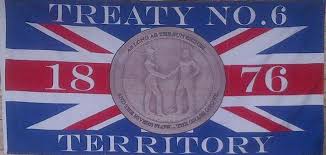Indigenous Education
Welcome!
Tansi (Cree), Aninskwa (Saulteaux), Edlanete (Dene), Doken ya un (Dakota), Toki I ya un (Nakota), Toked ya un (Lakota), "Tansi! Tansi! Tansi!" (Michif), Bonjour (French), and Hello (English).
Welcome to our Indigenous Education module. Its purpose is to provide you with some history about, and context of, Indigenous education in Canada.
The Royal Commission on Aboriginal Peoples (RCAP) states that the goals of education are:
"The destiny of a people is intricately bound to the way its children are educated. Education is the transmission of cultural dna from one generation to the next. It shapes the language and pathways of thinking, the contours of character and values, the social skills and creative potential of the individual. It determines the productive skills of a people." (1)
Public education is a provincial responsibility and the provinces and territories have the capacity to set education standards and policies for their respective populations as long as they do not interfere with the protections set aside in the Canadian Constitution of 1982. The Canadian Charter of Rights and Freedoms, which is embedded within the Canadian Constitution, protects the rights of a child to be educated in either of the official languages of Canada. The exception to provincial education is on Indian Reserves, where the federal government has the responsibility for providing education to Status Indians.
For Indigenous Treaty peoples, education as a right is secured in the numbered treaties which cover the majority of ON, MB, SK, AB and parts of BC and NWT. Treaties between the Crown and Indigenous Peoples are the foundation on which the Canadian settler nation was created. The treaty promise to education is protected in the Canadian Constitution, under Section 35(1): The existing aboriginal and treaty rights of the aboriginal people in Canada are hereby recognized and affirmed.

Treaty 6 is the territory on which the University of Saskatchewan is located. Treaty 6 also has a treaty promise to education. Many of us assume that every Canadian enjoys the same rights and freedoms, however Canada has a history of operating an arguably race-based education system that has left a terrible, intergenerational legacy.
Within Canada there existed a patriarchal and assimilationist system that was designed to reduce mobility, segregate, and unilaterally control and remove all rights for Indigenous peoples. This system was designed to destroy all elements of Indigenous nationhood and erode their inherent rights and freedoms that have existed since time immemorial. Unfortunately, while one group of citizens was enjoying a right to education and experiencing economic success, others were experiencing a much different reality.
Education determines a society's direction for the future, based on the transmission of values and knowledge to its children. Therefore, it is of vital importance that students are able to see and experience their culture and contributions as valuable within a social system. Such an educational system is in the emerging stages for Indigenous peoples in Canada. We are only now beginning to hear stories of Indigenous peoples' experiences and histories within the formal Canadian system of education.
Throughout this module, you will engage in online learning that offers videos, quizzes, and important websites, and you will have a chance to reflect on Indigenous education past, present, and future.
(1) Royal Commission on Aboriginal Peoples. (1996). Ch. 5. Education in Vol. 3. Gathering strength. pp. 404.